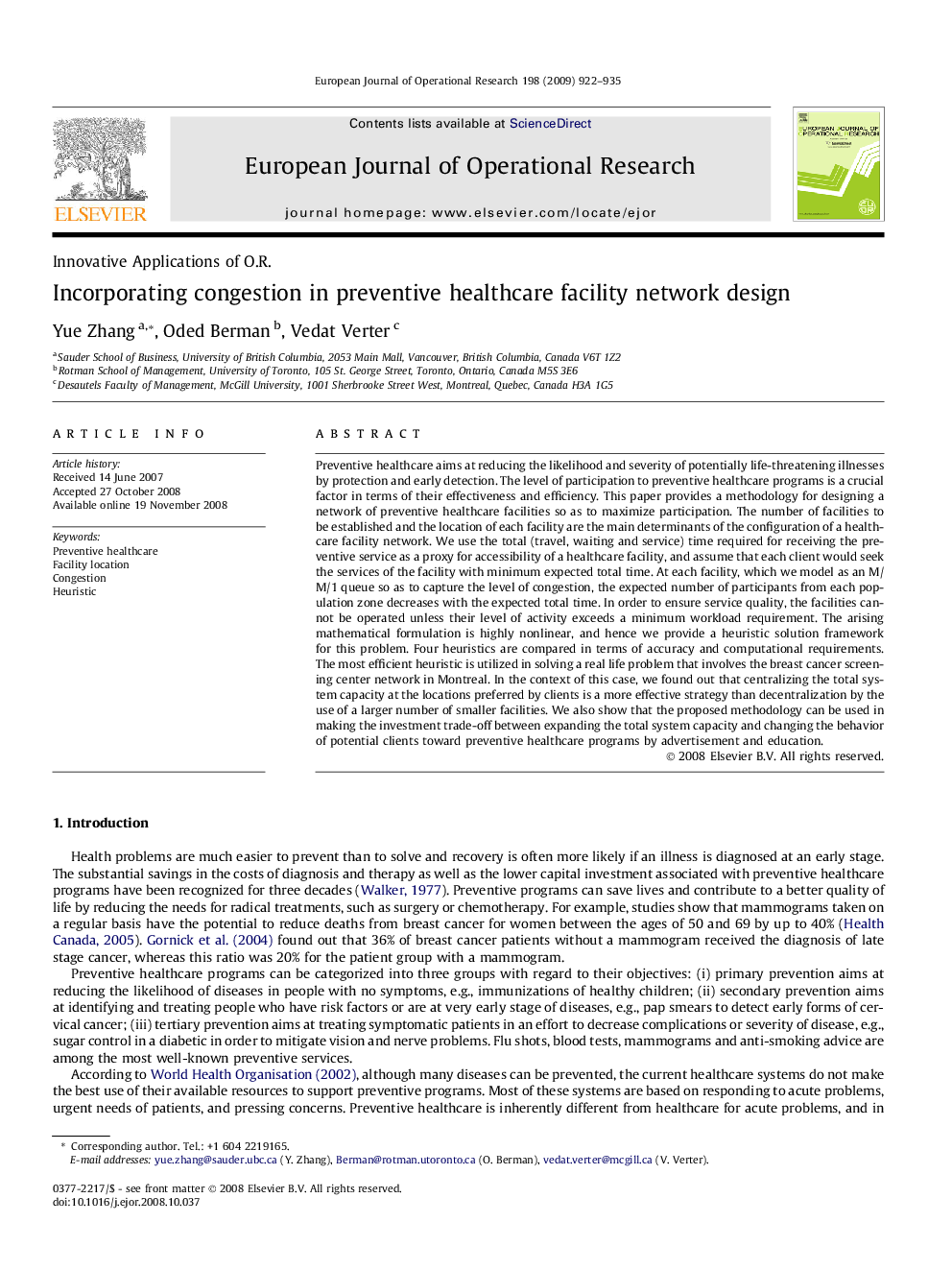| Article ID | Journal | Published Year | Pages | File Type |
|---|---|---|---|---|
| 481440 | European Journal of Operational Research | 2009 | 14 Pages |
Preventive healthcare aims at reducing the likelihood and severity of potentially life-threatening illnesses by protection and early detection. The level of participation to preventive healthcare programs is a crucial factor in terms of their effectiveness and efficiency. This paper provides a methodology for designing a network of preventive healthcare facilities so as to maximize participation. The number of facilities to be established and the location of each facility are the main determinants of the configuration of a healthcare facility network. We use the total (travel, waiting and service) time required for receiving the preventive service as a proxy for accessibility of a healthcare facility, and assume that each client would seek the services of the facility with minimum expected total time. At each facility, which we model as an M/M/1 queue so as to capture the level of congestion, the expected number of participants from each population zone decreases with the expected total time. In order to ensure service quality, the facilities cannot be operated unless their level of activity exceeds a minimum workload requirement. The arising mathematical formulation is highly nonlinear, and hence we provide a heuristic solution framework for this problem. Four heuristics are compared in terms of accuracy and computational requirements. The most efficient heuristic is utilized in solving a real life problem that involves the breast cancer screening center network in Montreal. In the context of this case, we found out that centralizing the total system capacity at the locations preferred by clients is a more effective strategy than decentralization by the use of a larger number of smaller facilities. We also show that the proposed methodology can be used in making the investment trade-off between expanding the total system capacity and changing the behavior of potential clients toward preventive healthcare programs by advertisement and education.
